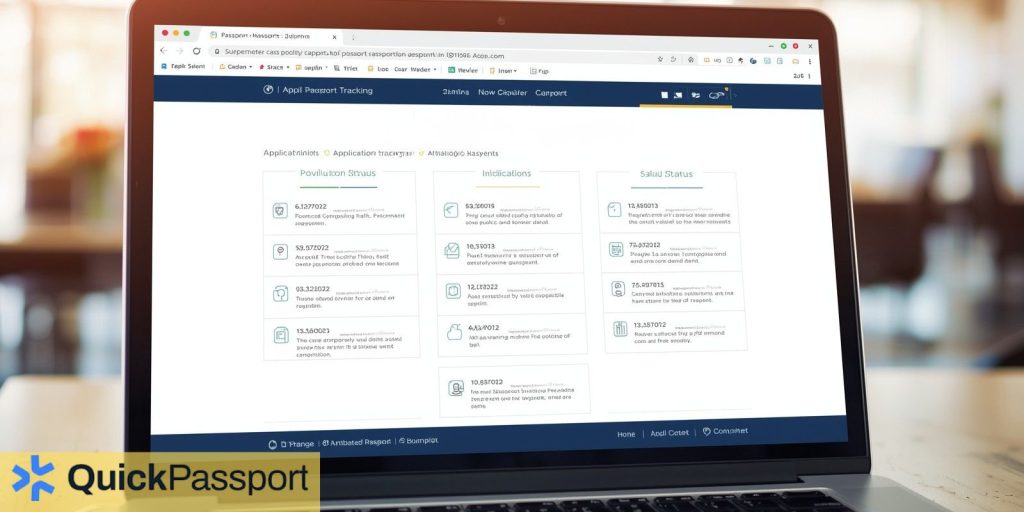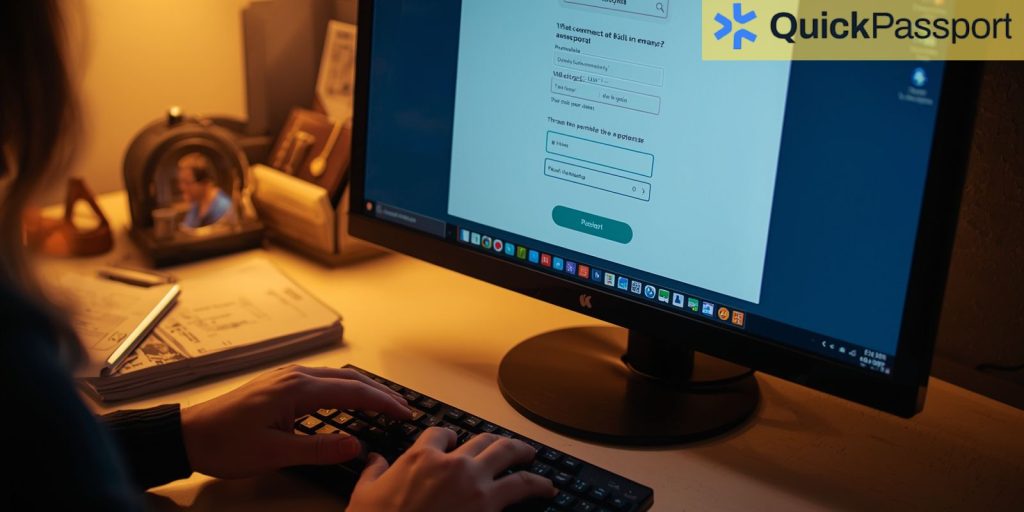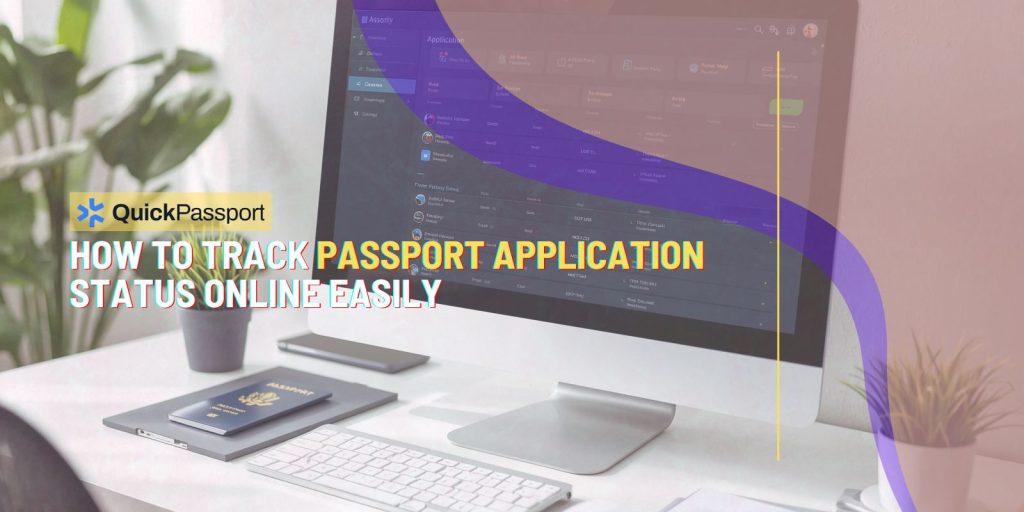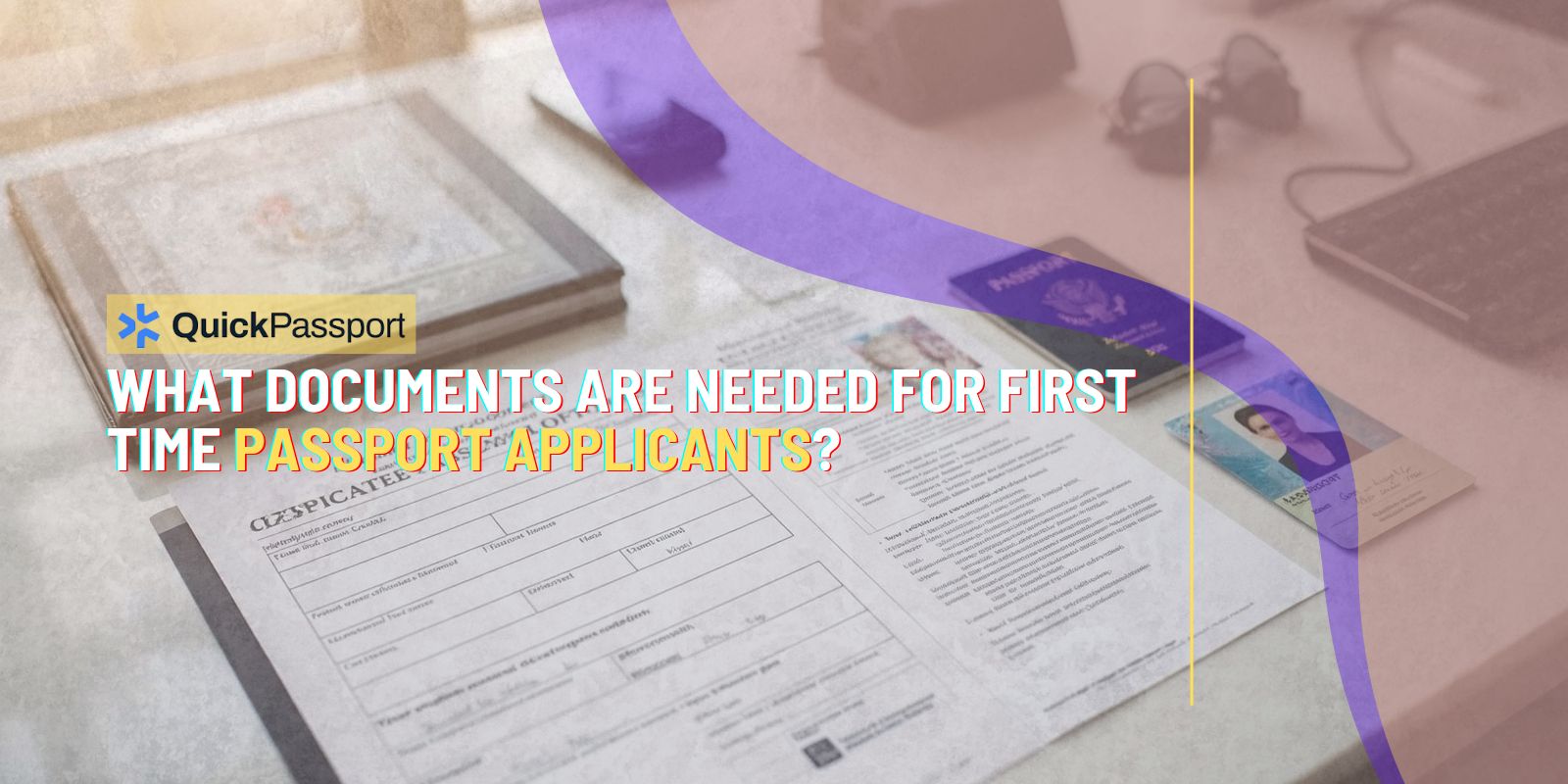Tracking your passport application status online has become an essential skill for modern travelers. Whether you’re planning a last-minute business trip, organizing a family vacation, or preparing for an emergency travel situation, knowing exactly where your passport stands in the application process can save you time, stress, and potential travel disruptions. The digital age has revolutionized how we monitor government services, and passport tracking is no exception.
Gone are the days when you had to make countless phone calls to government offices or visit passport agencies in person just to get a simple status update. Today’s online tracking systems provide real-time information about your application’s progress, from the moment it’s received until your new passport is ready for pickup or delivery. This technological advancement has made the entire passport application process more transparent and user-friendly than ever before.
Understanding how to effectively track your passport application status online isn’t just about convenience—it’s about taking control of your travel planning. When you know exactly when to expect your passport, you can book flights with confidence, finalize hotel reservations, and make other travel arrangements without the anxiety of wondering whether your documents will arrive on time. This knowledge is particularly valuable during peak travel seasons when processing times may be longer than usual.
The online tracking process also helps you identify potential issues early in the application process. If your application encounters any problems or requires additional documentation, you’ll be notified through the tracking system much faster than waiting for postal mail. This early warning system can be the difference between resolving issues quickly and facing significant delays that could impact your travel plans.
Moreover, online tracking provides a complete audit trail of your application’s journey through the system. This documentation can be invaluable if you need to contact customer service, escalate an issue, or provide proof of application status to employers, travel agencies, or other parties who need verification of your passport status.
Key Takeaways
- Multiple tracking methods available: You can check passport application status online through official government websites, mobile apps, and third-party tracking services, each offering different levels of detail and convenience.
- Real-time status updates: Modern tracking systems provide immediate information about your application’s current stage, from initial receipt through final processing and shipping preparation.
- Early problem detection: Online tracking helps identify issues such as missing documentation, photo problems, or payment discrepancies before they cause significant delays in processing.
- Processing time transparency: Digital tracking systems show estimated completion dates and help you understand typical processing timeframes for different types of applications and service levels.
- Mobile accessibility: Most tracking systems are optimized for smartphones and tablets, allowing you to check your status anywhere, anytime, without being tied to a desktop computer.
- Notification options: Many systems offer email or text message alerts when your application status changes, eliminating the need to manually check for updates constantly.
- Document preparation assistance: Online tracking often includes helpful resources and checklists to ensure you have all necessary documentation ready for different stages of the process.
- Customer service integration: When you do need to contact support, having your tracking information readily available speeds up the resolution process and helps representatives assist you more effectively.
Overview of Passport Application Tracking Systems
The foundation of modern passport application tracking lies in sophisticated database systems that monitor every step of your application’s journey through government processing centers. These systems have evolved significantly over the past decade, transforming from basic status indicators to comprehensive tracking platforms that provide detailed insights into processing timelines, potential delays, and next steps in the application process.

When you submit a passport application, whether online, by mail, or in person, your information immediately enters a centralized tracking database. This database assigns a unique tracking number or reference code that serves as your key to accessing status information throughout the process. The system continuously updates as your application moves through various stages, including initial review, document verification, background checks, photo processing, passport production, and final quality control.
Most government tracking systems operate on a 24/7 basis, with status updates occurring in real-time as processing milestones are reached. This means you can check your application status at any time of day or night and receive the most current information available. The systems are designed to handle high volumes of inquiries, especially during peak travel seasons when passport applications surge.
The user interface of these tracking systems has been designed with accessibility in mind, featuring intuitive navigation, clear status descriptions, and helpful explanations of what each processing stage means. Many systems also include estimated timeframes for completion, though these can vary based on current processing volumes, application type, and any special circumstances surrounding your particular case.
Step-by-Step Guide to Online Passport Tracking
To check passport application status online effectively, you’ll need to gather specific information before beginning the tracking process. The most important piece of information is your application tracking number, which is typically provided when you submit your application. This number may also be called a reference number, confirmation number, or application ID, depending on the system you’re using.
Start by visiting the official government passport website for your country. In the United States, this would be the State Department’s official passport website. Look for a section labeled “Check Application Status,” “Track My Passport,” or similar wording. These sections are usually prominently displayed on the homepage or easily accessible through the main navigation menu.
Once you’ve located the tracking section, you’ll typically need to enter your tracking number along with additional identifying information. This might include your last name as it appears on the application, your date of birth, or the last four digits of your Social Security number. This multi-factor verification system helps protect your personal information and ensures that only you can access your application status.
After entering the required information, the system will display your current application status. Common status indicators include “Application Received,” “In Process,” “Approved,” “Shipped,” and “Delivered.” Each status comes with a brief explanation of what it means and what you can expect next. Some systems also provide estimated timeframes for moving to the next stage of processing.
If you encounter any error messages or cannot locate your application, double-check that you’ve entered all information correctly. Pay special attention to spelling, as names must match exactly as they appear on your application. If problems persist, most tracking systems include troubleshooting guides or contact information for customer support.
For enhanced convenience, consider bookmarking the tracking page once you’ve successfully accessed your information. This saves time during future visits and ensures you’re always using the official, secure tracking portal rather than potentially fraudulent third-party sites.
Understanding Different Status Updates and What They Mean
Navigating the various status updates in passport tracking systems requires understanding the specific terminology and processes used by government agencies. Each status indicator represents a distinct phase in your application’s journey, and knowing what to expect at each stage helps you plan accordingly and identify when intervention might be necessary.
The “Application Received” status appears first and confirms that your application has been successfully submitted and entered into the processing system. This status typically appears within 24-48 hours of submission for online applications or within a week for mailed applications. During this phase, initial data entry and basic verification of required documents occurs.
“In Process” or “Processing” indicates that your application has moved beyond initial receipt and is actively being reviewed. This is often the longest phase, during which background checks are conducted, documents are thoroughly examined, and your eligibility for passport issuance is verified. Processing times can vary significantly based on current volumes and the complexity of your particular case.
Some systems include intermediate statuses such as “Under Review,” “Additional Documentation Required,” or “Quality Control.” These more detailed indicators help you understand exactly where your application stands and whether any action is required on your part. If additional documentation is needed, the system typically provides specific instructions on what to submit and how to submit it.
The “Approved” status indicates that your passport has been approved for production and will soon move into the printing and assembly phase. This is an important milestone that suggests your passport will be ready within the estimated timeframe, barring any unexpected production issues.
“Shipped” or “Mailed” status means your passport has been completed and sent to your designated address. This status often includes tracking information for the shipping carrier, allowing you to monitor the final delivery stage. Some systems also provide estimated delivery dates based on the shipping method selected during application.
Troubleshooting Common Tracking Issues
Even with well-designed tracking systems, users occasionally encounter technical difficulties or confusing status information that requires troubleshooting. Understanding common issues and their solutions can save time and reduce frustration when checking your passport application status online.

One of the most frequent problems occurs when users cannot locate their application using the provided tracking number. This issue often stems from data entry errors, such as confusing similar-looking characters (like the number 0 and the letter O) or accidentally transposing digits. Always verify that you’re entering the tracking number exactly as it appears on your receipt or confirmation email, paying careful attention to capitalization and special characters.
System maintenance and temporary outages can also prevent access to tracking information. Government websites typically schedule maintenance during off-peak hours, but unexpected technical issues can occur at any time. If you encounter error messages or cannot access the tracking system, try again after a few hours or check the website’s main page for any announced maintenance schedules.
Sometimes tracking information appears to be stuck at one status for an extended period. While this can be concerning, it’s often normal, especially during busy processing periods. However, if your application has remained at the same status for significantly longer than the estimated timeframe, it may indicate a problem that requires attention. In these cases, contacting customer service with your tracking number can help identify any issues and provide updated timeline estimates.
Browser compatibility issues can also affect tracking functionality. Older browsers or those with strict security settings may not display tracking information correctly. Try using a different browser, clearing your browser cache, or disabling browser extensions that might interfere with the website’s functionality.
For applications submitted through third-party services or expediting companies, tracking procedures may differ from standard government tracking. These services often provide their own tracking systems in addition to government tracking, which can sometimes show conflicting information. Always verify important status updates through official government channels when using third-party services.
Mobile Apps and Alternative Tracking Methods
The proliferation of smartphones has led to the development of mobile applications and alternative tracking methods that complement traditional web-based passport tracking systems. These mobile solutions offer increased convenience and accessibility, allowing travelers to monitor their application status while on the go.
Official government mobile apps provide the same functionality as web-based tracking systems but with interfaces optimized for smaller screens and touch navigation. These apps often include additional features such as push notifications for status changes, offline access to previously viewed information, and integration with device calendars to track important deadlines.
Push notification systems represent a significant advancement in passport tracking technology. Instead of requiring users to manually check for updates, these systems automatically send alerts when application status changes occur. Users can customize notification preferences to receive alerts via email, text message, or app notifications, ensuring they stay informed without constantly monitoring the tracking system.
Some tracking systems offer integration with popular calendar applications, automatically adding important dates such as estimated completion times or required document submission deadlines. This integration helps users stay organized and ensures critical dates don’t get overlooked during busy travel planning periods.
Third-party tracking aggregation services have emerged to help users monitor multiple applications or compare processing times across different service levels. While these services can be convenient, it’s important to verify that they’re legitimate and secure before providing sensitive application information. Always prioritize official government tracking systems for the most accurate and secure access to your application status.
Voice-activated tracking through smart speakers and virtual assistants is an emerging technology that some government agencies are beginning to explore. These systems allow users to check application status using voice commands, though implementation is still limited and typically requires initial setup through traditional tracking methods.
Professional Passport Services and Tracking Benefits
Professional passport services like QuickPassport – Phoenix offer enhanced tracking capabilities and personalized support that goes beyond standard government tracking systems. These services specialize in navigating the complexities of passport applications and provide additional layers of monitoring and assistance throughout the process.
When working with QuickPassport – Phoenix, clients receive dedicated tracking support that includes regular status updates, proactive communication about potential delays, and expert guidance on resolving any issues that arise during processing. This personalized approach ensures that clients stay informed about their application progress without having to navigate government tracking systems independently.
Professional services often maintain direct relationships with passport agencies, allowing them to access more detailed status information and expedite resolution of problems that might otherwise cause significant delays. This insider knowledge and established communication channels can be particularly valuable during peak processing periods or when dealing with complex applications.
QuickPassport – Phoenix also provides comprehensive pre-submission review services that help prevent common issues that lead to processing delays. By ensuring applications are complete and accurate before submission, these services significantly reduce the likelihood of status updates indicating missing documentation or other problems that require applicant intervention.
The tracking services provided by professional passport companies often include estimated delivery predictions based on historical processing data and current agency performance metrics. This information helps clients make informed decisions about travel planning and can identify when expedited processing might be necessary to meet specific travel deadlines.
Additionally, professional services typically offer contingency planning and alternative solutions if standard processing timelines won’t meet urgent travel needs. This might include guidance on emergency passport procedures, temporary travel documents, or other options that aren’t readily apparent through standard tracking systems.
Frequently Asked Questions
How often should I check my passport application status online?
You should check your passport application status online once every few days during normal processing periods. Checking more frequently won’t speed up the process, and status updates typically occur at specific processing milestones rather than daily. If you’ve enabled notifications, you can check less frequently since you’ll be alerted to important changes automatically.
What should I do if my tracking number isn’t working?
If your tracking number isn’t working, first verify that you’re entering it correctly, including any letters and special characters. Try using a different browser or device, and ensure you’re on the official government website. If the problem persists after 48 hours, contact the passport agency’s customer service line with your application details.
Can I track my passport application if I applied by mail?
Yes, you can track passport applications submitted by mail using the same online tracking systems as other application methods. You’ll need the tracking number from your receipt or the check number used for payment, along with your personal information to access the status updates.
How long does each status typically last during processing?
Status durations vary significantly based on current processing volumes and application complexity. “Application Received” typically lasts 1-3 days, “In Process” can last anywhere from 2-8 weeks for routine service, and “Approved” through “Shipped” usually takes 1-3 days. Expedited applications move through statuses much faster.
Will I receive notifications when my passport status changes?
Notification availability depends on the tracking system you’re using. Many government tracking systems offer optional email or text notifications that you can enable during the tracking setup process. Check the notification preferences section of your tracking portal to see what options are available.
What does it mean if my status shows “Additional Documentation Required”?
This status indicates that your application is missing required documents or that submitted documents don’t meet acceptance criteria. The tracking system should provide specific instructions about what documentation is needed and how to submit it. Respond to these requests promptly to avoid significant processing delays.
Can I track someone else’s passport application?
You can only track passport applications for which you have authorized access. This typically means applications you submitted yourself or those for minor children where you’re the legal guardian. Tracking systems require personal information verification to protect applicant privacy.
Is it safe to check my passport status on public Wi-Fi?
While government tracking websites use secure connections, it’s generally safer to check sensitive information like passport status using a private, secure internet connection. If you must use public Wi-Fi, ensure you’re on the official government website and consider using a VPN for additional security.
Conclusion
Mastering the art of tracking your passport application status online is an essential skill for modern travelers who want to maintain control over their travel planning process. The evolution of digital tracking systems has transformed what was once an opaque, frustrating experience into a transparent, user-friendly process that keeps applicants informed every step of the way.
The key to successful passport tracking lies in understanding the various tools and methods available, from official government websites to mobile apps and professional services. By familiarizing yourself with common status indicators, troubleshooting techniques, and alternative tracking options, you can navigate the system confidently and address any issues that arise promptly.
Remember that while online tracking provides valuable insights into your application’s progress, processing times can vary based on numerous factors beyond your control. Use tracking information to make informed decisions about travel planning, but always allow adequate time for processing, especially during peak travel seasons or when applying for the first time.
Professional services like QuickPassport – Phoenix can provide additional peace of mind and expertise, particularly for complex applications or urgent travel needs. These services complement online tracking with personalized support and proactive problem resolution that can save time and reduce stress during the application process.
As technology continues to advance, passport tracking systems will likely become even more sophisticated, offering enhanced features like predictive analytics, improved mobile experiences, and better integration with travel planning tools. Staying informed about these developments will help you take full advantage of available tracking capabilities and ensure smooth passport application experiences for all your future travel needs.






